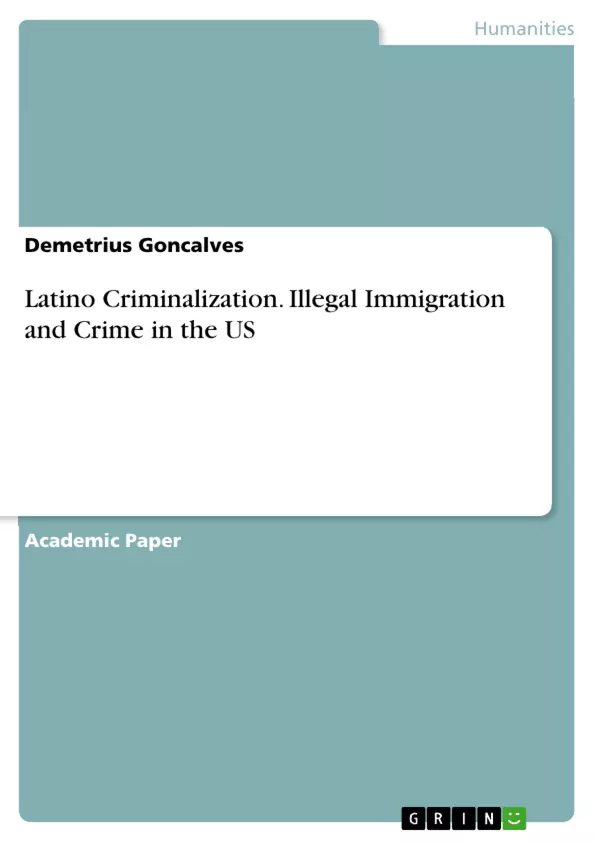This research paper examines the relationship of undocumented Latinos to crime in the United States. Many empirical studies in the past years argued that undocumented immigrants have been a reason in the decrease in crime rates over the past forty years.
Communities with a high number of undocumented immigrants tend to have very low crime rates compared to those of native-born Americans. Already deteriorated neighbourhoods, where undocumented newcomers establish their homes, show a significant decrease in crime. Both the spur of immigration and the decrease in crime rates have run parallel to each other since the 1980s.
However, in the last decade, a mass incarceration of undocumented Latinos was found in the U.S. corrections system due to an overwhelming target of minority groups and tough legislations passed by the U.S. government.
Inhaltsverzeichnis (Table of Contents)
- Abstract
- Literature Review
- Empirical Data - Research
- Theory in Place
- Policy Implications and Concluding Remarks
- REFERENCES
Zielsetzung und Themenschwerpunkte (Objectives and Key Themes)
This research paper investigates the relationship between undocumented Latinos and crime in the United States, challenging the long-held perception of Latinos as criminals. It aims to review existing literature on immigrant criminalization, presenting evidence that suggests immigrants have a lower crime rate compared to native-born Americans. The paper explores the impact of immigration on crime rates, the social and psychological consequences of mass incarceration of undocumented Latinos, and the costs of illegal immigration to society.
- The relationship between undocumented Latinos and crime in the United States.
- The history of criminalization of immigrants, particularly undocumented Latinos.
- The impact of mass incarceration on undocumented Latinos and their families.
- The cost of illegal immigration to society.
- The role of immigration in shaping crime rates.
Zusammenfassung der Kapitel (Chapter Summaries)
- Abstract: This section provides an overview of the research paper's focus, which is to examine the relationship between undocumented Latinos and crime in the United States. It highlights the historical perception of Latinos as criminals and presents preliminary evidence suggesting a lower crime rate among undocumented immigrants compared to native-born Americans.
- Literature Review: This chapter delves into the existing research on immigrant criminalization. It discusses the history of segregation laws and the Chicago School of thought's influence on perceiving immigrants, particularly undocumented immigrants, as criminals. The chapter analyzes the work of various scholars and explores the social and economic factors contributing to the criminalization of undocumented Latinos.
- Empirical Data - Research: This chapter examines the empirical evidence regarding crime rates and undocumented immigrants. It discusses studies that have shown a decrease in crime rates in communities with a high number of undocumented immigrants compared to those with predominantly native-born populations. The chapter also presents data on the types of crimes committed by undocumented immigrants and the consequences of their incarceration.
Schlüsselwörter (Keywords)
This research focuses on the relationship between undocumented Latinos and crime in the United States. It explores the historical and contemporary perspectives on immigrant criminalization, examines empirical data on crime rates, and analyzes the impact of mass incarceration on undocumented Latinos. Key themes include immigrant criminalization, undocumented Latinos, crime rates, mass incarceration, and social and economic consequences of immigration.
- Citation du texte
- Demetrius Goncalves (Auteur), 2016, Latino Criminalization. Illegal Immigration and Crime in the US, Munich, GRIN Verlag, https://www.grin.com/document/920395



